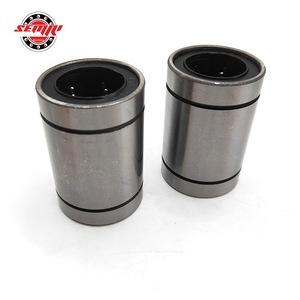Ball Bearings and Bushings: Essential Components for Industrial Efficiency
Introduction
Ball bearings and bushings form the backbone of modern industrial machinery, enabling smooth operation across countless applications. These precision components reduce friction, support rotational motion, and maintain alignment in mechanical systems. As global manufacturing demands grow, understanding the proper selection and application of ball bearings and bushings becomes crucial for operational efficiency and equipment longevity.

Understanding Ball Bearings and Bushings
Ball bearings utilize rolling elements between inner and outer rings to minimize friction in rotational applications. Bushings (or plain bearings) operate through sliding contact, providing surface-to-surface support. While ball bearings excel in high-speed, low-friction environments, bushings offer superior load distribution and vibration damping capabilities.
Key Benefits for Industrial Applications
Properly specified ball bearings and bushings significantly reduce energy consumption through friction minimization. They extend equipment lifespan by preventing metal-to-metal contact, while their precision manufacturing ensures consistent performance in demanding environments from automotive systems to wind turbines.
Common Types and Specifications
Ball bearing variations include deep groove, angular contact, and thrust bearings, each designed for specific load conditions. Bushings come in bronze, polymer, and composite materials, with self-lubricating options available for maintenance-free operation. Critical specifications include load ratings, temperature tolerance, and RPM limits.
Selection Criteria for Optimal Performance
Choosing between ball bearings and bushings requires analyzing load types (radial vs axial), operating speeds, environmental conditions, and maintenance requirements. High-speed applications typically favor ball bearings, while heavy-load scenarios often benefit from bronze bushings.
Industry Trends and Innovations
The market sees growing demand for ceramic hybrid bearings and polymer composite bushings. Smart bearings with embedded sensors now enable predictive maintenance, while nanotechnology-enhanced lubricants push performance boundaries in extreme conditions.
Connecting to Our Solutions
Our company specializes in premium-grade ball bearings and bushings for global industrial applications. From standard sizes to custom-engineered solutions, we provide components meeting ISO 9001 standards with comprehensive technical support.
Frequently Asked Questions
What's the main difference between bearings and bushings?
Bearings use rolling elements (balls/rollers), bushings rely on sliding surfaces.
How often should bearings be lubricated?
Depends on operating conditions – typically 3-6 months for standard applications.
Can bushings handle high-speed rotation?
Generally better suited for moderate speeds compared to ball bearings.
What indicates bearing failure?
Excessive noise, vibration, or heat generation during operation.
Do polymer bushings require lubrication?
Many self-lubricating varieties exist, eliminating regular maintenance.
Conclusion
Understanding ball bearings and bushings is vital for optimizing mechanical systems. As industry leaders, we provide tailored solutions for diverse operational needs. Explore our product catalog or contact our engineering team for personalized component selection guidance.




 13869596835
13869596835